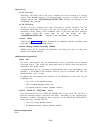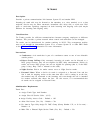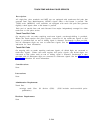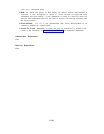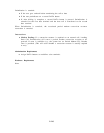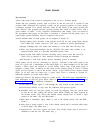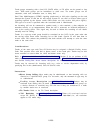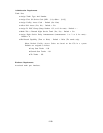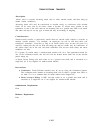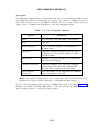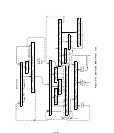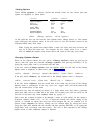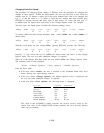TRUNK GROUPS
Description
Allows each trunk in the system to reassigned to one of up to 16 trunk groups.
Trunks link two switching systems, such as System 25 and the local CO or System 25 and
another PBX. Although not required, trunks can be grouped together in trunk groups
(sometimes referred to as pooled facilities) when all the trunks in the group perform the
same function. This grouping provides resource pooling that results in better service with a
given number of trunks.
It also simplifies administration and calling. Calls are routed to
the appropriate trunk group; an idle trunk, if available, is selected from the group. Up to 16
trunk groups (pooled facilities) may be assigned in the system.
Several different kinds of trunk groups can be assigned in System 25:
● Central Office (CO)—Provides a link with the local CO for calls except Direct Inward
Dial (DID) calls. Trunks classed as “CO” have a number of special characteristics.
● Foreign Exchange (FX)—CO trunks that connect to a CO other than the local CO.
● Wide Area Telecommunications Service (WATS)—CO trunks that connect to an
Outward WATS office or a dial 800 (in-WATS) Service office.
● Direct Inward Dial (DID)—Provides incoming (only) service from the local CO.
These calls go directly to voice terminals instead of through the attendant.
● Tie–Provides a link with another private switching system or network.
Trunk groups can be one-way (incoming) or two-way.
Selection of the trunk group to be
used for a given call is determined by the initial digits of a dialed number (or by the ARS
feature ). These digits are referred to as the facility access code. Each trunk group is
assigned a unique code.
Assuming an idle trunk in the selected group is found, a seizure
signal (service request) is sent to the distant switch.
If the distant switch requires dialed
digits (as all but some tie trunks do), a signal (Dial Tone) is returned to System 25,
indicating readiness to accept dialed digits.
Trunk type refers to the physical design of a trunk circuit.
The trunk types supported and a
brief description of each are given below. Refer to Section 3, “Functional Description” and
Section 9, “Glossary” for additional information.
● Loop Start–A closure signal is sent through the loop formed by the trunk leads.
● Ground Start–Similar to loop start but enhanced with ground signals.
● Immediate Start—No start dial signals are used. On outgoing calls, the system waits
at least 80 ms after sending the seizure signal before sending the digits required by
the distant switch. This allows the distant switch enough time to attach a digit
receiver to the trunk. (Tie and DID trunks. )
● Wink Start–A momentary signal (wink) is sent to the distant switch. (Tie and DID
trunks.)
● Delay Dial–A steady signal is sent to the distant switch and is removed when ready
to receive digits. (Tie trunks only. )
● Automatic–No start dial signals are used.
The seizure signal sent or received is
sufficient to route the call. (Tie trunks only. )
2-249



